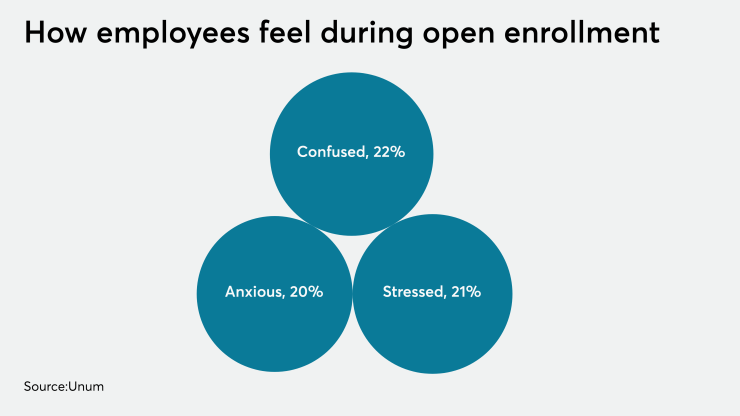With continued uncertainty surrounding the coronavirus pandemic’s lasting implications on the workplace, planning employee benefits packages for 2021 and beyond is bringing historic challenges for business owners.
Face-to-face meetings have historically been a key component for many companies’ overall open enrollment strategy. Given current safety concerns for the employees as well as visiting benefit carriers, providers or brokers, many employers are now turning to virtual solutions.
“In certain circumstances with appropriate precautions, there may be employers that still choose to go down that path,” says Kara Hoogensen, senior vice president of specialty benefits at Principal. “But it's going to be different and much more virtual than it ever has in the past.”
The main challenge this open enrollment season boils down to giving employees attention, and doing so in a way that will allow them to still get the information that they need to make the best decisions possible for themselves and their personal circumstances, Hoogensen says. Besides a virtual open enrollment, employees have other tasks to navigate at the same time, ranging from health concerns to homeschooling, which employers need to be mindful of.
See also:
The impact on benefits
Benefits continue to be a key means of attracting and retaining talent, Hoogensen says, even with the unemployment situation where it is today relative to the beginning of the year. Less than 10% of employers recently surveyed say that they will make any change to their benefit offerings, indicating that employers want to maintain the status quo and keep benefits as a stable component of their overall total compensation package, according to recent Principal research.
While income protection may have previously fallen lower on the priority list, COVID-19 has brought new meaning to the potential benefit as part of an employer sponsored package, and there may be more focus on having some form of income protection coverage within a benefits package to hire and retain talent.
“There's a heightened awareness among employers and employees around the value of benefits, like income protection or life insurance through the workplace,” Hoogensen says. “So those will continue to be top of mind for people.”
The pandemic has also increased employers’ focus on overall employee wellness. With rates of anxiety and depression on the rise, more employees will look to their employer to provide mental health benefits. Principal’s research shows that 21% of employers plan to increase mental health and well-being programs.
“The definition of benefits will continue to expand, with mental well-being and mental health being an area where there's going to be innovation and advancement,” Hoogensen says.
Recalibrating open enrollment strategies
In this new open enrollment environment, technology will play a key role. Many brokers have begun to leverage different technology platforms that are available in the marketplace, with some also making them available to their employer clients. These types of technology platforms often have access to streamlined enrollment capabilities, and connecting employers with the carriers themselves can provide access to tools and resources. Principal offers a range of free open enrollment resources on its website, from articles to tips and tactics.
“All of these different tools would be helpful and make things easier in light of our current environment,” Hoogensen says. “Much deeper and more digital — that's going to be key to success for this open enrollment season.”
See also:
A lasting impact
So where will all these changes leave open enrollment in 2021 and beyond? Probably somewhere in the middle of a virtual and in-person experience, says Hoogensen. The reliance on technology during this year’s open enrollment season will likely leave a lasting impact on employers. Even if it goes back to a more traditional approach with a face-to-face element, enrollment will still likely be augmented by technology capabilities in the future, she says.
“We've all upped our game over the last six months in how we leverage technology in new and different ways,” Hoogensen says. “Overall we have found ourselves to be more productive than we thought even possible. I would say that that same concept underlying open enrollment going forward should be no different.”






